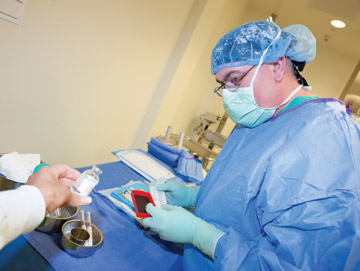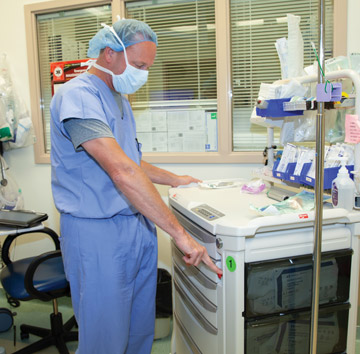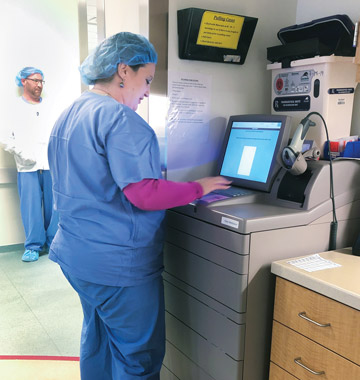There's a lot to consider when managing medications, from proper labeling and disposal to differentiating doses and preventing diversion, but protecting patients and staff from drug-related harm is an essential part of your job. Answer these 10 questions to find out if you're up to the task.
1. It's permissible to keep drawn up medications in syringes for up to a maximum of ___ hours.
- a. 1
- b. 2
- c. 3
- d. 4
- Reveal
Answer: a
The standard noted in medication safety guidelines from reputable institutions maintains that drugs drawn in syringes may be retained for up to 1 hour. Additionally, syringes loaded with drugs are to be completely expelled and must never be carried over from one day to the next. Remember, there are plenty of steps you can and should take to ensure leftover drugs are disposed of properly so that they won't wind up in the hands of diverters. One of the most popular methods involves expelling leftover syringe substances into a liquid-dissolving agent combined with a charged activated charcoal that begins neutralizing medications on contact. Regardless of the method you use, the key is to ensure every trace of expelled drugs is rendered irretrievable.
Close
2. Anesthesia providers should collect all narcotic discards and present those discards for witnessing by another licensed professional at the end of each day.
- a. true
- b. false
- Reveal
Answer: b
While on the surface this might seem like a safe and efficient way to handle discards, it actually presents an opportunity for drug diverters to take advantage of a gap in safety processes and the chain of control. Diverters may use the lack of real-time discarding to substitute, say, fentanyl with saline solution. Then, by the end of the day, the witness to the discarding will only see clear liquid and have no way of discerning the actual contents within the medication container. In light of the opioid crisis, you must meticulously document your medication disposal processes. That means creating an easy-to-follow trail of daily controlled drug removal from clinical areas with records of when and by whom the drugs were dispensed. There should always be at least 2 licensed individuals involved in this process.
You'll also want to ensure a licensed individual witnesses discards of partial portions of controlled substances — with both the witness and the discarder signing off at the time of discard. Finally, you must also validate a count of the controlled drug cabinet at the beginning and end of each day. This is a long-standing element of "controlling the controls."
Close
3. Because sufentanil is essentially the same drug as the fentanyl, just produced by a different manufacturer, you can use the 2 drugs interchangeably.
- a. true
- b. false
- Reveal
Answer: b
Both are potent opioids used for post-op pain management, but the drugs cannot be used interchangeably. First, sufentanil has a more rapid onset and a shorter duration. Second, the dosing schedules of the 2 drugs are different. While adult dosing of post-op of fentanyl is approximately 50 mcg/kg to 100 mcg/kg — and up to 200 mcg/kg — in 5- to 10-minutes intervals, sufentanil is dosed up to 8 mcg/kg.
Close
4. How many weeks before surgery should users of medical or recreational marijuana stop smoking to significantly reduce the risk of sedation-related complications?
- a. 4
- b. 6
- c. 8
- d. 10
- Reveal
Answer: c
We know that cannabis has a number of pharmacologic implications, including on doses of anesthetics required for adequate sedation. For example, a study in the European Journal of Anaesthesiology found that patients who routinely use marijuana require substantially higher doses of propofol for satisfactory induction when inserting a laryngeal mask (osmag.net/BF6kwN). You want to stress to pot-smoking patients that the sooner they quit smoking before surgery, the better, that each smoke-free day decreases their overall risk of anesthesia-related complications. In fact, quitting just 12 hours before surgery can make a difference. Ideally, however, patients should stop smoking marijuana 8 weeks before surgery to improve their response to anesthesia.
Close
.svg?sfvrsn=be606e78_3)



.svg?sfvrsn=56b2f850_5)